 Often, what is said only complicates matters, and what can be seen orshown carries more weight, especially when it is expressed in athoughtful way. Minor Shadowsplays like the accompaniment to a film or documentary, but instead ofthe music enhancing images and ideas that it is purposefully coupledwith, here they conjure those images themselves. Their long pieces arecomposed and arranged as if with a cinematographer's eye; each note orpluck positioned to lend the scene the proper depth, the most vividillumination or the right shading to reveal the finest details thatgives the image, whether visual or aural, the greatest sensual impact.The patient, lingering guitar strokes of "In 1983 He Loved to Fly"seize upon implications of the title's past tense verb. It creates afeeling of watching someone living out a memory, staring at a gray skyas the warmth of the guitar plucks hovers while the accompaniment fadesaway leaving it alone and precariously aloft, unsupported. The chordstroke fades, only to return just as intensely before repeating itsreminder again and again. 1 Mile North finds that subtlety andrestraint can be virtues and employs them throughout Minor Shadows,never lapsing into indulgent tedium, but finding a comfortable nook inwhich to base their songs before they move outward. Their progressionis not explosive, nor is it fiery. The tension and presence is feltlike heat from a radiator, filling the room in waves. "The Sick" beginswith a simple strum, different from the preceding songs in that it issomewhat more ragged, more percussive in its strike. Sampled drums hitscrop up intermittently as keyboards rise and fall around giving aneerie mood to the piece. Finally, the strum unfurls into a melody thatreleases the anxiety it initially presented, not by speeding up orsnarling out but simply elaborating on the plot. In this sense, asingle hushed word is worth a thousand shouted ones. This dichotomyappears almost literally on the next track, "Black Lines," whichfeatures a film sound clip of a father viciously berating and verballyabusing his son. In response, 1 Mile North plays along with theirpatient track as if assuming the point of view of the victim of theclip. Their music finds both the fear of the situation but in itssteady keyboard melody it also implies an almost triumphant resolve.The clip adds a wonderful tension to the track, and provides anexcellent foil for 1 Mile North to converse with. This dialog serves asan argument, the fury of the actor mingling with the music, and yet forall the histrionics he flings, he is unable to unsettle it. It is amoment of insight where Minor Shadows proves that quite a bit can be said or shown when care and consideration is taken to crafting an intricate scene.
Often, what is said only complicates matters, and what can be seen orshown carries more weight, especially when it is expressed in athoughtful way. Minor Shadowsplays like the accompaniment to a film or documentary, but instead ofthe music enhancing images and ideas that it is purposefully coupledwith, here they conjure those images themselves. Their long pieces arecomposed and arranged as if with a cinematographer's eye; each note orpluck positioned to lend the scene the proper depth, the most vividillumination or the right shading to reveal the finest details thatgives the image, whether visual or aural, the greatest sensual impact.The patient, lingering guitar strokes of "In 1983 He Loved to Fly"seize upon implications of the title's past tense verb. It creates afeeling of watching someone living out a memory, staring at a gray skyas the warmth of the guitar plucks hovers while the accompaniment fadesaway leaving it alone and precariously aloft, unsupported. The chordstroke fades, only to return just as intensely before repeating itsreminder again and again. 1 Mile North finds that subtlety andrestraint can be virtues and employs them throughout Minor Shadows,never lapsing into indulgent tedium, but finding a comfortable nook inwhich to base their songs before they move outward. Their progressionis not explosive, nor is it fiery. The tension and presence is feltlike heat from a radiator, filling the room in waves. "The Sick" beginswith a simple strum, different from the preceding songs in that it issomewhat more ragged, more percussive in its strike. Sampled drums hitscrop up intermittently as keyboards rise and fall around giving aneerie mood to the piece. Finally, the strum unfurls into a melody thatreleases the anxiety it initially presented, not by speeding up orsnarling out but simply elaborating on the plot. In this sense, asingle hushed word is worth a thousand shouted ones. This dichotomyappears almost literally on the next track, "Black Lines," whichfeatures a film sound clip of a father viciously berating and verballyabusing his son. In response, 1 Mile North plays along with theirpatient track as if assuming the point of view of the victim of theclip. Their music finds both the fear of the situation but in itssteady keyboard melody it also implies an almost triumphant resolve.The clip adds a wonderful tension to the track, and provides anexcellent foil for 1 Mile North to converse with. This dialog serves asan argument, the fury of the actor mingling with the music, and yet forall the histrionics he flings, he is unable to unsettle it. It is amoment of insight where Minor Shadows proves that quite a bit can be said or shown when care and consideration is taken to crafting an intricate scene.  Often, what is said only complicates matters, and what can be seen orshown carries more weight, especially when it is expressed in athoughtful way. Minor Shadowsplays like the accompaniment to a film or documentary, but instead ofthe music enhancing images and ideas that it is purposefully coupledwith, here they conjure those images themselves. Their long pieces arecomposed and arranged as if with a cinematographer's eye; each note orpluck positioned to lend the scene the proper depth, the most vividillumination or the right shading to reveal the finest details thatgives the image, whether visual or aural, the greatest sensual impact.The patient, lingering guitar strokes of "In 1983 He Loved to Fly"seize upon implications of the title's past tense verb. It creates afeeling of watching someone living out a memory, staring at a gray skyas the warmth of the guitar plucks hovers while the accompaniment fadesaway leaving it alone and precariously aloft, unsupported. The chordstroke fades, only to return just as intensely before repeating itsreminder again and again. 1 Mile North finds that subtlety andrestraint can be virtues and employs them throughout Minor Shadows,never lapsing into indulgent tedium, but finding a comfortable nook inwhich to base their songs before they move outward. Their progressionis not explosive, nor is it fiery. The tension and presence is feltlike heat from a radiator, filling the room in waves. "The Sick" beginswith a simple strum, different from the preceding songs in that it issomewhat more ragged, more percussive in its strike. Sampled drums hitscrop up intermittently as keyboards rise and fall around giving aneerie mood to the piece. Finally, the strum unfurls into a melody thatreleases the anxiety it initially presented, not by speeding up orsnarling out but simply elaborating on the plot. In this sense, asingle hushed word is worth a thousand shouted ones. This dichotomyappears almost literally on the next track, "Black Lines," whichfeatures a film sound clip of a father viciously berating and verballyabusing his son. In response, 1 Mile North plays along with theirpatient track as if assuming the point of view of the victim of theclip. Their music finds both the fear of the situation but in itssteady keyboard melody it also implies an almost triumphant resolve.The clip adds a wonderful tension to the track, and provides anexcellent foil for 1 Mile North to converse with. This dialog serves asan argument, the fury of the actor mingling with the music, and yet forall the histrionics he flings, he is unable to unsettle it. It is amoment of insight where Minor Shadows proves that quite a bit can be said or shown when care and consideration is taken to crafting an intricate scene.
Often, what is said only complicates matters, and what can be seen orshown carries more weight, especially when it is expressed in athoughtful way. Minor Shadowsplays like the accompaniment to a film or documentary, but instead ofthe music enhancing images and ideas that it is purposefully coupledwith, here they conjure those images themselves. Their long pieces arecomposed and arranged as if with a cinematographer's eye; each note orpluck positioned to lend the scene the proper depth, the most vividillumination or the right shading to reveal the finest details thatgives the image, whether visual or aural, the greatest sensual impact.The patient, lingering guitar strokes of "In 1983 He Loved to Fly"seize upon implications of the title's past tense verb. It creates afeeling of watching someone living out a memory, staring at a gray skyas the warmth of the guitar plucks hovers while the accompaniment fadesaway leaving it alone and precariously aloft, unsupported. The chordstroke fades, only to return just as intensely before repeating itsreminder again and again. 1 Mile North finds that subtlety andrestraint can be virtues and employs them throughout Minor Shadows,never lapsing into indulgent tedium, but finding a comfortable nook inwhich to base their songs before they move outward. Their progressionis not explosive, nor is it fiery. The tension and presence is feltlike heat from a radiator, filling the room in waves. "The Sick" beginswith a simple strum, different from the preceding songs in that it issomewhat more ragged, more percussive in its strike. Sampled drums hitscrop up intermittently as keyboards rise and fall around giving aneerie mood to the piece. Finally, the strum unfurls into a melody thatreleases the anxiety it initially presented, not by speeding up orsnarling out but simply elaborating on the plot. In this sense, asingle hushed word is worth a thousand shouted ones. This dichotomyappears almost literally on the next track, "Black Lines," whichfeatures a film sound clip of a father viciously berating and verballyabusing his son. In response, 1 Mile North plays along with theirpatient track as if assuming the point of view of the victim of theclip. Their music finds both the fear of the situation but in itssteady keyboard melody it also implies an almost triumphant resolve.The clip adds a wonderful tension to the track, and provides anexcellent foil for 1 Mile North to converse with. This dialog serves asan argument, the fury of the actor mingling with the music, and yet forall the histrionics he flings, he is unable to unsettle it. It is amoment of insight where Minor Shadows proves that quite a bit can be said or shown when care and consideration is taken to crafting an intricate scene.  When you listen to Thighpaulsandra's music, your cup most certainly runneth over. In fact, Thighpaulsandra may be one of the most indulgent musicians working today. Tim Lewis' gooey concoctions of all of the most exaggerated elements of prog, krautrock, glam rock and homoeroticism is not some postmodern juxtaposition of styles meant to demonstrate his cleverness. Rather, it is the work of a man who fetishizes the music he loves to the point of overdose. This is not a bad thing. Indeed, it is a pleasure to hear music as un-selfconscious as Thighpaulsandra's, that is referential without resorting to parody or irony. His Some Head and Michel Publicity Window EPs both ingeniously exhibited Thighpaulsandra's talent for making his musical fetishes coherent and enticing to listeners. Thighpaulsandra's singular mastery of analog synthesizers has made him the ideal choice for collaborations with Julian Cope, Spiritualized and Coil. 2001's I, Thighpaulsandra, was an exhasting 2-CD set that displayed his skills at catalizing beautiful and unique long-form compositions, but also evidenced his prog-esque penchant for overblown, overlong self-indulgent wankery. I, Thighpaulsandra was thankfully saved from being relegated to the same pile as Yes' Tales From Topographic Oceans by its energetic spirit and the jarring eclecticism of each track. The new album definitely benefits from its relatively efficient length. Double Vulgar is a tighter, slimmer and sexier beast, much like the young naked men that adorn the album's artwork in various states of aesthetic slavery, death and decay. Thighpaulsandra is assisted by an assortment of terrific collaborators, including familiar names from the Coil family such as The Boy Anal, Martin Schellard, Cliff Stapleton, Ossian Brown and Jhon Balance. "The Bush Administration Project" combines the operatic voice of Thighpaulsandra's mum Dorothy Lewis backed by some very minimal piano, before majestic synthesizers explode into prominence, with all the magic and pomp of Phaedra-era Tangerine Dream. The second track "Slammer" takes a sharp left turn into a deeply rhythmic rock n' roll groove, with sexy vocals courtesy of Sion Orgon. Synthesizers are wielded for maximum psychedelic effect, sounding like a recontextualized version of bad-but-interesting 70's prog-rock like The Sensational Alex Harvey Band or Curved Air. "On the Horns of Magda Reuth" is an improvised jam that utilizes the strange and rare Russian ANS synthesizer, along with guitars and hurdy gurdy. It's a lengthy, psychedelic jam session, but it's much more Nurse With Wound than Grateful Dead, with its eerie atmosphere and sudden launches into pounding industrial oscillations. "The Circumcision of Christ" meanders around a bit in sampled shortwave radio transmissions, before turning into a wickedly brutal electro-rock song with soaring, mutated vocals. The title track is also the most brilliant—an unfolding drama that melds medievalism with Eno-ambience before transforming into a massive glam-metal-Kraut groove, with joyously barked vocals by the Welshman himself. The brief, twisted noise explosion of "He Tastes of the Sea" is followed quickly by the eroticized drones of "His Royal Highness The Prince of Wales Breaches Reality." This ritualized sex fantasy utilizes the beatiful vibratory Farfisa organ along with samples of some rather shockingly lewd pillow talk between Ossian Sex-Shop and another unidentified pervert. Double Vulgar is unmistakably the work of an artist who has the uncanny ability both to shamelessly wallow in his own predilections, and persuade the listener to go along for the ride.
When you listen to Thighpaulsandra's music, your cup most certainly runneth over. In fact, Thighpaulsandra may be one of the most indulgent musicians working today. Tim Lewis' gooey concoctions of all of the most exaggerated elements of prog, krautrock, glam rock and homoeroticism is not some postmodern juxtaposition of styles meant to demonstrate his cleverness. Rather, it is the work of a man who fetishizes the music he loves to the point of overdose. This is not a bad thing. Indeed, it is a pleasure to hear music as un-selfconscious as Thighpaulsandra's, that is referential without resorting to parody or irony. His Some Head and Michel Publicity Window EPs both ingeniously exhibited Thighpaulsandra's talent for making his musical fetishes coherent and enticing to listeners. Thighpaulsandra's singular mastery of analog synthesizers has made him the ideal choice for collaborations with Julian Cope, Spiritualized and Coil. 2001's I, Thighpaulsandra, was an exhasting 2-CD set that displayed his skills at catalizing beautiful and unique long-form compositions, but also evidenced his prog-esque penchant for overblown, overlong self-indulgent wankery. I, Thighpaulsandra was thankfully saved from being relegated to the same pile as Yes' Tales From Topographic Oceans by its energetic spirit and the jarring eclecticism of each track. The new album definitely benefits from its relatively efficient length. Double Vulgar is a tighter, slimmer and sexier beast, much like the young naked men that adorn the album's artwork in various states of aesthetic slavery, death and decay. Thighpaulsandra is assisted by an assortment of terrific collaborators, including familiar names from the Coil family such as The Boy Anal, Martin Schellard, Cliff Stapleton, Ossian Brown and Jhon Balance. "The Bush Administration Project" combines the operatic voice of Thighpaulsandra's mum Dorothy Lewis backed by some very minimal piano, before majestic synthesizers explode into prominence, with all the magic and pomp of Phaedra-era Tangerine Dream. The second track "Slammer" takes a sharp left turn into a deeply rhythmic rock n' roll groove, with sexy vocals courtesy of Sion Orgon. Synthesizers are wielded for maximum psychedelic effect, sounding like a recontextualized version of bad-but-interesting 70's prog-rock like The Sensational Alex Harvey Band or Curved Air. "On the Horns of Magda Reuth" is an improvised jam that utilizes the strange and rare Russian ANS synthesizer, along with guitars and hurdy gurdy. It's a lengthy, psychedelic jam session, but it's much more Nurse With Wound than Grateful Dead, with its eerie atmosphere and sudden launches into pounding industrial oscillations. "The Circumcision of Christ" meanders around a bit in sampled shortwave radio transmissions, before turning into a wickedly brutal electro-rock song with soaring, mutated vocals. The title track is also the most brilliant—an unfolding drama that melds medievalism with Eno-ambience before transforming into a massive glam-metal-Kraut groove, with joyously barked vocals by the Welshman himself. The brief, twisted noise explosion of "He Tastes of the Sea" is followed quickly by the eroticized drones of "His Royal Highness The Prince of Wales Breaches Reality." This ritualized sex fantasy utilizes the beatiful vibratory Farfisa organ along with samples of some rather shockingly lewd pillow talk between Ossian Sex-Shop and another unidentified pervert. Double Vulgar is unmistakably the work of an artist who has the uncanny ability both to shamelessly wallow in his own predilections, and persuade the listener to go along for the ride.  The various field recordings, found sounds, and narratives that composethis album somehow add up to a satisfying listen despite theirseemingly random order. The liner notes suggest listening to the CD inrandom order and also relate the fact that much of the material wasoriginally recorded on a cassette tape. There are some points wherethis is clear but for the most part the fact that this was originallyrecorded to cassette tape is unimportant. The sounds are a mishmash ofstrange tones, almost danceable beats, non-English narrations, andshort blurs of speech and machine sounds. Yuko Nexus6 captures many ofthe every day sounds that I find fascinating and runs them along not socommon sounds that might be discovered while manipulating stretches oftape or a turntable. Many of the tracks are under one minute in lengthand are simply short sound portraits. Other tracks are just over twominutes and a rare few run over five minutes long. The longer tracksare sound collages that run the gamut from exciting to boring and drawnout. However, they have moments spread out within themselves thatsomehow revive my interest in them despite the rather blandinterruptions. I often get the impression that I'm listening to a radiothat is being tuned to several different frequencies at irregularintervals and enjoy the disparity. There are elements of earlyelectronic composition on Journal De Tokyo. There's not an air of academia, but instead an air of adventure and curiousity that keeps me listening.
The various field recordings, found sounds, and narratives that composethis album somehow add up to a satisfying listen despite theirseemingly random order. The liner notes suggest listening to the CD inrandom order and also relate the fact that much of the material wasoriginally recorded on a cassette tape. There are some points wherethis is clear but for the most part the fact that this was originallyrecorded to cassette tape is unimportant. The sounds are a mishmash ofstrange tones, almost danceable beats, non-English narrations, andshort blurs of speech and machine sounds. Yuko Nexus6 captures many ofthe every day sounds that I find fascinating and runs them along not socommon sounds that might be discovered while manipulating stretches oftape or a turntable. Many of the tracks are under one minute in lengthand are simply short sound portraits. Other tracks are just over twominutes and a rare few run over five minutes long. The longer tracksare sound collages that run the gamut from exciting to boring and drawnout. However, they have moments spread out within themselves thatsomehow revive my interest in them despite the rather blandinterruptions. I often get the impression that I'm listening to a radiothat is being tuned to several different frequencies at irregularintervals and enjoy the disparity. There are elements of earlyelectronic composition on Journal De Tokyo. There's not an air of academia, but instead an air of adventure and curiousity that keeps me listening. In a time when folks often tend to expect small independent labels tospecialize in a particular sound, style or sub-sub-genre, GhostlyInternational is definitely an anomaly. When they debuted in 2000 withTadd Mullinix's Winking Makes A Facealbum, they were viewed as a new addition to the cluster of Americanlabels such as Schematic and Isophlux that were concentrating primarilyon Aphex- and Autechre-influenced IDM. However, with each subsequentGhostly record (not to mention their dancefloor-orientated sublabel,Spectral Sounds), the imprint has continued to blur the lines betweengenres, releasing everything from downtempo instrumental hip-hop tominimal techno to neo-synthpop and electro. This latter category hasbecome what many people know them for, thanks to the success of lastyear's great Disco Nouveau compilation that came out just intime to catch the tail end of all of that "electroclash" foolishness.Unlike that carefully planned and strictly curated collection, Idol Tryoutshas no theme or concept aside from being a traditional label sampler,featuring tracks from previous and upcoming releases alongside a fewexclusive bits. As you might expect, the result is a bit of a stylisticmish-mash, but since most of the tracks are pretty damn good, it feelsmore like a slightly schizophrenic but still cool mix-tape rather thanthe lazy promotional tool that these sort of projects often turn out tobe.
In a time when folks often tend to expect small independent labels tospecialize in a particular sound, style or sub-sub-genre, GhostlyInternational is definitely an anomaly. When they debuted in 2000 withTadd Mullinix's Winking Makes A Facealbum, they were viewed as a new addition to the cluster of Americanlabels such as Schematic and Isophlux that were concentrating primarilyon Aphex- and Autechre-influenced IDM. However, with each subsequentGhostly record (not to mention their dancefloor-orientated sublabel,Spectral Sounds), the imprint has continued to blur the lines betweengenres, releasing everything from downtempo instrumental hip-hop tominimal techno to neo-synthpop and electro. This latter category hasbecome what many people know them for, thanks to the success of lastyear's great Disco Nouveau compilation that came out just intime to catch the tail end of all of that "electroclash" foolishness.Unlike that carefully planned and strictly curated collection, Idol Tryoutshas no theme or concept aside from being a traditional label sampler,featuring tracks from previous and upcoming releases alongside a fewexclusive bits. As you might expect, the result is a bit of a stylisticmish-mash, but since most of the tracks are pretty damn good, it feelsmore like a slightly schizophrenic but still cool mix-tape rather thanthe lazy promotional tool that these sort of projects often turn out tobe. Things get started a little slowly with "Making it Pay" by Dabrye (oneof several pseudonyms used by Tadd Mullinix), a head-nodding hip-hoppiece that is pleasant but doesn't leave much of an impression. Alittle more meat can be found right afterwards in the stormingelectro-disco of Charles Manier's "At The Bottle". Midwest Product thencome in with a pair of chilled and cinematic downtempo tracks—one ofthem a spacey remix by Telefon Tel Aviv—that will put you back on thecouch with a smile and spliff (should you be so inclined). And so itgoes from there, whiplashing back and forth from the cold industro-funkof Kill Memory Crash, to the crisp minimal tech-house of Matthew Dearand Osborne, to the lush and melodic IDM of Outputmessage, to thecompletely unexpected but very cool psych-pop cover of Wire's "Map Ref.41° N 93° W" by Dykehouse. By the time the album comes full circle withthe set-closing Prefuse 73 "megamix" of Dabrye, the listener has notonly been taken on a tour though the world of Ghostly/Spectral, butthey've also been given a more general taste of the current state ofthings in the American indie electronic music scene. If the generalquality of the material on this disc is any indication, things ain'tlooking half bad.
- Charles Manier - At The Bottle
- Dykehouse - Map Ref. 41° N 93° W
- Outputmessage - Bernard's Song

At the outset, this seems like a very strange matching of artists for an EP. Monster Movie craft more electropop for the shoegazer set while Dreamend concoct droned instrumental music with a very improvisational feel if not creation process. Together on the same EP, they sound worlds apart, with their only common element being drone; but considering the fact that this is the first Graveface Records wide release, it becomes apparent that this is more for them than either of the artists.
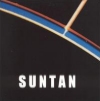 I'mtired of all the bands that are obviously influenced by Spaceman 3and/or Joy Division. Sure, they get a lot of the sound right: long,sprawling instrumental passages; psychedelic bass and guitar lines;pained vocals that sound reminiscent of Ian Curtis. After all is saidand done, though, they add nothing new to the musical landscape, andtheir output is a pale parody of itself. Suntan are the latest new bandto be acclaimed as though they are a vital addition to the psychedelicrock sound, when in fact their music is incredibly derivative. It's thesame old thing: slow build with low volume synths or lightly-playedguitar; add more guitars and drums; throw in echoed or processed vocalsdelivered lazily; once you're out of things to say, turn up the volumeand rock out. On the first track, "L #249747," the meandering andrepititious nature of the melody is only slightly less annoying thanthe need to extend the track out to nearly eleven minutes. Everythinginteresting on this song happens between 1:00 and 4:30, so there's noneed for it to have a long introduction and an angry denouement. "Bagit Up" is slightly better, though the dueling vocal parts with separateand different effects, meant to sound like a split personality, Ithink, got annoying real quick. Then when it should end, and it seemslike it does, the music comes right back again, building from cricketsor whistles to a noise fest that churns for another two and a halfminutes. It's completely unnecessary, and adds nothing to the song. Thefinal song, "Soak Up the Rays," may not sound original, but it showsreal promise for this band. A solid melody, anguished but not gratingvocals, and it's the first that justifies its length. For once the bandseems in the pocket, playing together on something approaching beauty.Ihope their debut album explores the strengths of the last song ratherthan the missteps of the first two.
I'mtired of all the bands that are obviously influenced by Spaceman 3and/or Joy Division. Sure, they get a lot of the sound right: long,sprawling instrumental passages; psychedelic bass and guitar lines;pained vocals that sound reminiscent of Ian Curtis. After all is saidand done, though, they add nothing new to the musical landscape, andtheir output is a pale parody of itself. Suntan are the latest new bandto be acclaimed as though they are a vital addition to the psychedelicrock sound, when in fact their music is incredibly derivative. It's thesame old thing: slow build with low volume synths or lightly-playedguitar; add more guitars and drums; throw in echoed or processed vocalsdelivered lazily; once you're out of things to say, turn up the volumeand rock out. On the first track, "L #249747," the meandering andrepititious nature of the melody is only slightly less annoying thanthe need to extend the track out to nearly eleven minutes. Everythinginteresting on this song happens between 1:00 and 4:30, so there's noneed for it to have a long introduction and an angry denouement. "Bagit Up" is slightly better, though the dueling vocal parts with separateand different effects, meant to sound like a split personality, Ithink, got annoying real quick. Then when it should end, and it seemslike it does, the music comes right back again, building from cricketsor whistles to a noise fest that churns for another two and a halfminutes. It's completely unnecessary, and adds nothing to the song. Thefinal song, "Soak Up the Rays," may not sound original, but it showsreal promise for this band. A solid melody, anguished but not gratingvocals, and it's the first that justifies its length. For once the bandseems in the pocket, playing together on something approaching beauty.Ihope their debut album explores the strengths of the last song ratherthan the missteps of the first two.  Under the guise of Populous, 22 year-old Italian Andrea Mangiamanipulates sampled drum loops, keyboards sounds and spoken wordclippings to create a very relaxed setting that tends to motion towardsthe laptop genre. To avoid a sometimes sterile environment within theblue glow set, Mangia uses slower Hip Hop beats and subtle synth basslines to create laid back grooves on most of the disc's nine tracks,while still keeping the skitter and crackle elements prominent in themix. At times, the passive approach to synth and various moduleprogressions comes across as near-soundscapes within the compositions,set to head-nodding rhythms. The sprawling time and one note upshot on"Ent-The Dexo" lays the foundation for underplayed keyboard motifswhich weave about to form the bare necessities of melodic movement."Clijster (Blepharo Edit)" clicks along with eerie synth swells thatease in to familiar Reggae keyboard accents, drawing in the long tonesof a sampled horn and squelchy beats. The throwback to the 70'ssoundtrack groove of bright bass, Rhodes piano and loose drums on"Stretch Abuse + Snare" is so settled that several repetitions arewelcomed for the drawn out keyboard padding to give the impression ofsome momentum. Quipotends to be a disc where the beats and grooves are given a minimalmelodic interpretation so as not to take away from the comfortableatmosphere created by the gentle waves of keyboards and assortedelectronic elements.
Under the guise of Populous, 22 year-old Italian Andrea Mangiamanipulates sampled drum loops, keyboards sounds and spoken wordclippings to create a very relaxed setting that tends to motion towardsthe laptop genre. To avoid a sometimes sterile environment within theblue glow set, Mangia uses slower Hip Hop beats and subtle synth basslines to create laid back grooves on most of the disc's nine tracks,while still keeping the skitter and crackle elements prominent in themix. At times, the passive approach to synth and various moduleprogressions comes across as near-soundscapes within the compositions,set to head-nodding rhythms. The sprawling time and one note upshot on"Ent-The Dexo" lays the foundation for underplayed keyboard motifswhich weave about to form the bare necessities of melodic movement."Clijster (Blepharo Edit)" clicks along with eerie synth swells thatease in to familiar Reggae keyboard accents, drawing in the long tonesof a sampled horn and squelchy beats. The throwback to the 70'ssoundtrack groove of bright bass, Rhodes piano and loose drums on"Stretch Abuse + Snare" is so settled that several repetitions arewelcomed for the drawn out keyboard padding to give the impression ofsome momentum. Quipotends to be a disc where the beats and grooves are given a minimalmelodic interpretation so as not to take away from the comfortableatmosphere created by the gentle waves of keyboards and assortedelectronic elements. Mathis Mootz writes evil, destructive music that is fun in a devilishway. Under the guise of Panacea he has released some of the nastiest,heaviest, and most spectacularly dark recordings I've heard.Squaremeter has, on the other hand, been something of a detour: themusic is less rhythmic, more abstract, and not so much demented as itis creepy. The gap between these two monikers is beginning to close. War of Soundis an all-out melodic attack that churns out rhythmic pulses,middle-eastern flourishes, and an unrelenting air of doom. The entirealbum feels like a slow march through the desert. There are longstretches of beat-less music that are full of pulsing, Arabian-likesound. Once the tension has reached its boiling point, Mootz bringsdown his iron fist in subtle, measured movements. First comes thebouncing synthesizers moving in dramatic tonal shifts, then there's ahint of war-drums deep and full, and then all hell breaks loose. By thetime everything settles down there's already a counterstrike building.There is a continuity that runs through every track that supplies astrong thematic base. This allows for each song to build off theprevious one. Although nothing moves at a quick pace here, there is adensity to every second of sound that makes it feel powerful andcaustic. The vocal samples that run through it are a little annoying atfirst but with repeated listens they sink into and fit well with themusical themes. I think this album should come packaged with a viking'shelmet and a broadsword, though: Mootz's evil has sunk into my bones.
Mathis Mootz writes evil, destructive music that is fun in a devilishway. Under the guise of Panacea he has released some of the nastiest,heaviest, and most spectacularly dark recordings I've heard.Squaremeter has, on the other hand, been something of a detour: themusic is less rhythmic, more abstract, and not so much demented as itis creepy. The gap between these two monikers is beginning to close. War of Soundis an all-out melodic attack that churns out rhythmic pulses,middle-eastern flourishes, and an unrelenting air of doom. The entirealbum feels like a slow march through the desert. There are longstretches of beat-less music that are full of pulsing, Arabian-likesound. Once the tension has reached its boiling point, Mootz bringsdown his iron fist in subtle, measured movements. First comes thebouncing synthesizers moving in dramatic tonal shifts, then there's ahint of war-drums deep and full, and then all hell breaks loose. By thetime everything settles down there's already a counterstrike building.There is a continuity that runs through every track that supplies astrong thematic base. This allows for each song to build off theprevious one. Although nothing moves at a quick pace here, there is adensity to every second of sound that makes it feel powerful andcaustic. The vocal samples that run through it are a little annoying atfirst but with repeated listens they sink into and fit well with themusical themes. I think this album should come packaged with a viking'shelmet and a broadsword, though: Mootz's evil has sunk into my bones.  Forthis project, John Tejada eschews his current aural trends and DJ workto collaborate with Takeshi Nishimoto, with the former on drums, guitarand bass and the latter on guitar and bass. Their music isjazz-influenced in time signatures and tones, and the electronics areminimal, there for effect and a little flavoring only. Tejada is anextremely capable drummer—he learned how to play as a child. Together,he and Nishimoto lay down bass grooves that snake and hypnotize underintertwining guitar lines that dance around each other playfully, liketwo people on a first date trying to find the perfect opportunity forthat first kiss. "Jet Stream" opens the record with some clicks andburbles, and for a moment you think "Here we go again." The guitarleads you astray for a few seconds, but it's when the drums hit thatyou realize this is not the same ball of wax. The courtship of theguitars seems to be the centerpiece of this collaboration, as they takecenter stage on every track. Most tracks have a medium tempo, with onlya few powering their way through the speakers, and that's just the wayit should be. There's no need for hurry here, as both artists let theingredients delicately percolate into whatever it wants. Highlightsinclude "Search for Sleep," "Long Division," and the more electronic"Make Sense and Loose," which has some clever edits and effects. Everything at Oncecouldn't be a more appropriate title, as on their debut LP I'm Not aGun pull out all the stops, and show that there's nowhere for them togo but up.
Forthis project, John Tejada eschews his current aural trends and DJ workto collaborate with Takeshi Nishimoto, with the former on drums, guitarand bass and the latter on guitar and bass. Their music isjazz-influenced in time signatures and tones, and the electronics areminimal, there for effect and a little flavoring only. Tejada is anextremely capable drummer—he learned how to play as a child. Together,he and Nishimoto lay down bass grooves that snake and hypnotize underintertwining guitar lines that dance around each other playfully, liketwo people on a first date trying to find the perfect opportunity forthat first kiss. "Jet Stream" opens the record with some clicks andburbles, and for a moment you think "Here we go again." The guitarleads you astray for a few seconds, but it's when the drums hit thatyou realize this is not the same ball of wax. The courtship of theguitars seems to be the centerpiece of this collaboration, as they takecenter stage on every track. Most tracks have a medium tempo, with onlya few powering their way through the speakers, and that's just the wayit should be. There's no need for hurry here, as both artists let theingredients delicately percolate into whatever it wants. Highlightsinclude "Search for Sleep," "Long Division," and the more electronic"Make Sense and Loose," which has some clever edits and effects. Everything at Oncecouldn't be a more appropriate title, as on their debut LP I'm Not aGun pull out all the stops, and show that there's nowhere for them togo but up.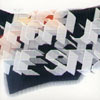 The latest release from Norwegian supergroup Jaga Jazzist sees the much-anticipated follow up to last year's brilliant A Livingroom Hush with a slightly different approach. On The Stix,it would appear that more of the electronic elements on both theinstrumental and production sides have been employed, which in turncements the multi-layered, at times complex compositions. Opening withthe most interesting track I've heard in months, "Kitty Wu" blendsmelodic bass clarinet and vibraphone with dub bass lines, staccatoguitar and synth patches to drummer Martin Horntveth's programmed beatsand fusion-styled playing. "Another Day" is the perfect example of liveinstrument-augmented drum 'n bass with its plucked strings doubling thesyncopated rhythms for an interesting modal composition. The choppyAfro-Cuban groove interpretation of "Suomi Finland" is anchored byrolling vibraphone and warm bass sounds in which several differentmelodies are introduced on keyboard, flute and guitar throughoutvarious sections, eventually blending nicely into each other withoutbecoming a jumble. "Reminders" kicks off with busy, up-tempo drummingand half-time bass and vibes for subtle, muted trumpet to play off,which then grows into a full-sounding orchestration of horns and athick, multi-faceted rhythm section. The interestingly titled "I CouldHave Killed Him In The Sauna" moves from middle Eastern flavored pianoprogressions peppered with synth blips and scratchy beats to 70s progrock punches that are just this side of headbanging. Pretty, long-linedstrings, vibes, synth squelches and weaving, treated bass clarinet fillout the spaces and have one's jaw on the floor. Although the group'sname evokes the style of music in which instrumental soloists are theprime focus, such is not the case with Jaga Jazzist as they are amusical collective where the sum is greater than the individual parts.With such interesting compositions that marry up some creativeinstrumentation, several listens of The Stix are required to catch them all. -
The latest release from Norwegian supergroup Jaga Jazzist sees the much-anticipated follow up to last year's brilliant A Livingroom Hush with a slightly different approach. On The Stix,it would appear that more of the electronic elements on both theinstrumental and production sides have been employed, which in turncements the multi-layered, at times complex compositions. Opening withthe most interesting track I've heard in months, "Kitty Wu" blendsmelodic bass clarinet and vibraphone with dub bass lines, staccatoguitar and synth patches to drummer Martin Horntveth's programmed beatsand fusion-styled playing. "Another Day" is the perfect example of liveinstrument-augmented drum 'n bass with its plucked strings doubling thesyncopated rhythms for an interesting modal composition. The choppyAfro-Cuban groove interpretation of "Suomi Finland" is anchored byrolling vibraphone and warm bass sounds in which several differentmelodies are introduced on keyboard, flute and guitar throughoutvarious sections, eventually blending nicely into each other withoutbecoming a jumble. "Reminders" kicks off with busy, up-tempo drummingand half-time bass and vibes for subtle, muted trumpet to play off,which then grows into a full-sounding orchestration of horns and athick, multi-faceted rhythm section. The interestingly titled "I CouldHave Killed Him In The Sauna" moves from middle Eastern flavored pianoprogressions peppered with synth blips and scratchy beats to 70s progrock punches that are just this side of headbanging. Pretty, long-linedstrings, vibes, synth squelches and weaving, treated bass clarinet fillout the spaces and have one's jaw on the floor. Although the group'sname evokes the style of music in which instrumental soloists are theprime focus, such is not the case with Jaga Jazzist as they are amusical collective where the sum is greater than the individual parts.With such interesting compositions that marry up some creativeinstrumentation, several listens of The Stix are required to catch them all. -This special little nugget is a limited CD-R of rare archival material that was available at Steven Stapleton's recent appearance in Portland, Oregon to celebrate the release of his Beta-Lactam Ring LP. It's also available for a limited time from Beta-Lactam's website. The Musty Odor of Pierced Rectums contains thirteen tracks of never-before-released Nurse With Wound pieces, similar to 1989's odds-and-sods compilation A Sucked Orange. This release, although not unified by a single concept or containing a coherent flow between tracks, once again proves that Steven Stapleton's garbage is way better than 99% of the crap released by modern experimental musicians. There's a lot of different kinds of music here, most of it in the darker, more esoteric vein. Comparisons could be made to Nurse classics such as Large Ladies With Cake in the Oven and the harsher, more industrial noisescapes on early NWW records. Most of the tracks are typically absurd mixes of mutated sounds, bizarre samples, and dislocated audio dementia. Track two reminds me of Pink Floyd's "Several Species of Small Furry Animals Gathered Together in A Cave and Grooving With a Pict." Stapleton seems to be experimenting with the "glitch" a little more these days. At random points, the sounds will unexpectedly stutter and drop out, leaving gaping holes or "wounds" in the composition. These thirteen untitled tracks make for a very engaging listen. Nobody is going to declare this to be Stapleton's masterpiece, but for Nurse completists, this CD-R is essential. And for the rest of those who are not obsessive Nurse With Wound collectors, what the hell is wrong with you people?
 Far too much music being released these days seems to be utilitarian in nature. Albums are touted as "great driving music" or "after-club chillout music." I've actually heard certain critics suggest that an album is best heard in a particular time and setting: "Listen to this in the early morning hours after your girlfriend dumps you." Ever since Brian Eno developed the concept of ambient music, there seems to be a concerted effort to turn music into the equivalent of a backrub: something purely contextual that functions as an emotional salve if applied properly. Since the early 80's, Nurse With Wound has been pushing the opposite concept. Steven Stapleton's music is not made to make you feel better, or as something upbeat to play while doing crunches. Stapleton's music is designed for active, deep listening. You simply can't just play it in the background as you converse with friends. Even his most ambient pieces are not meditative; they are designed as a complex drama to make you FEEL something.
Far too much music being released these days seems to be utilitarian in nature. Albums are touted as "great driving music" or "after-club chillout music." I've actually heard certain critics suggest that an album is best heard in a particular time and setting: "Listen to this in the early morning hours after your girlfriend dumps you." Ever since Brian Eno developed the concept of ambient music, there seems to be a concerted effort to turn music into the equivalent of a backrub: something purely contextual that functions as an emotional salve if applied properly. Since the early 80's, Nurse With Wound has been pushing the opposite concept. Steven Stapleton's music is not made to make you feel better, or as something upbeat to play while doing crunches. Stapleton's music is designed for active, deep listening. You simply can't just play it in the background as you converse with friends. Even his most ambient pieces are not meditative; they are designed as a complex drama to make you FEEL something.
 It's hard to remember that the 1980's—usually thought of as the decadeof new wave, college rock and hair metal excess—was also the decade ofa vitally important generation of underground experimental musicians.Post-industrial, noise and audio surrealism flourished during the 80's,and labels like United Dairies and DOM were the primary outlet for thisunique crop of artists. A lot of this music has remained hopelesslyrare and unavailable on the digital format. Luckily, last year saw somere-releases of HNAS' classic back catalogue, but there is a lot stillleft untouched. Where are the CD reissues of the Nihilist Spasm Band,Asmus Tietchens, Robert Haigh, Uli Trepte, Masstishaddhu and TwoDaughters? How about Limpe Fuchs, Smegma and Algebra Suicide? Come onpeople, this is a goldmine of great musical esoterica! Now that I'mthrough ranting, I can revel in the fact that Roger Doyle's Silverdoorlabel has now re-released his United Dairies masterpiece. Rapid Eye Movementswas originally released under the artist name Operating Theatre in1981, and for me it is an unmatched classic of tape collage. Nokidding, I like to refer to this album as the "Citizen Kane" of musiqueconcrete. I first heard the United Dairies cassette nearly ten yearsago when a friend played it to me while I was in an altered state, andI was baffled and awed by this strange construction of disparateelements and bizarre sound effects. Later, I listened to it again andagain in an effort to decipher the seemingly narrative progression ofthe tape edits. The United Dairies release contained only two sidelongpieces: "Fin-Estra" and "Rapid Eye Movements." For this reissue,however, Roger Doyle has added two earlier pieces as a bonus: "ThePiano Suite" and "Why is Killkenny So Good?" The former is athree-part, impressionistic solo piano performance by Roger Doyle.While the music is nice enough, it really sticks out like a sore thumbsandwiched between two lengthy, atmospheric tape collage pieces. Nooffense to Mr. Doyle, but I don't think that the inclusion of thispiece was a very good idea. In contrast, "Killkenny" fits perfectly onthe disc, an eerie cut-up of a 13-year old drug addict describing hisaddiction as dimensional sounds swoop and mutate in the foreground."Fin-Estra" is a dark, mental voyage filled with unexpected drama. andDoyle utilizes sped up and slowed-down tape queuing in an ingenius way.The sounds of an orchestra, children at play, and strange alien tonesare juxtaposed. The 25 minutes of "Rapid Eye Movements" is my favoritemoment in avant-garde music. A man trudges through the snow screaming"Madeleine!", a room full of foreign shoolchildren recite words,someone plays scales on a lonely piano in an empty room. It's the auralequivalent of a disjointed, ephemoral dream, full of deja vu momentsthat seem even creepier and more evocative with each listen. I'm on atleast my 100th listen of Rapid Eye Movements, and it still hasn'tbecome boring or predictable.
It's hard to remember that the 1980's—usually thought of as the decadeof new wave, college rock and hair metal excess—was also the decade ofa vitally important generation of underground experimental musicians.Post-industrial, noise and audio surrealism flourished during the 80's,and labels like United Dairies and DOM were the primary outlet for thisunique crop of artists. A lot of this music has remained hopelesslyrare and unavailable on the digital format. Luckily, last year saw somere-releases of HNAS' classic back catalogue, but there is a lot stillleft untouched. Where are the CD reissues of the Nihilist Spasm Band,Asmus Tietchens, Robert Haigh, Uli Trepte, Masstishaddhu and TwoDaughters? How about Limpe Fuchs, Smegma and Algebra Suicide? Come onpeople, this is a goldmine of great musical esoterica! Now that I'mthrough ranting, I can revel in the fact that Roger Doyle's Silverdoorlabel has now re-released his United Dairies masterpiece. Rapid Eye Movementswas originally released under the artist name Operating Theatre in1981, and for me it is an unmatched classic of tape collage. Nokidding, I like to refer to this album as the "Citizen Kane" of musiqueconcrete. I first heard the United Dairies cassette nearly ten yearsago when a friend played it to me while I was in an altered state, andI was baffled and awed by this strange construction of disparateelements and bizarre sound effects. Later, I listened to it again andagain in an effort to decipher the seemingly narrative progression ofthe tape edits. The United Dairies release contained only two sidelongpieces: "Fin-Estra" and "Rapid Eye Movements." For this reissue,however, Roger Doyle has added two earlier pieces as a bonus: "ThePiano Suite" and "Why is Killkenny So Good?" The former is athree-part, impressionistic solo piano performance by Roger Doyle.While the music is nice enough, it really sticks out like a sore thumbsandwiched between two lengthy, atmospheric tape collage pieces. Nooffense to Mr. Doyle, but I don't think that the inclusion of thispiece was a very good idea. In contrast, "Killkenny" fits perfectly onthe disc, an eerie cut-up of a 13-year old drug addict describing hisaddiction as dimensional sounds swoop and mutate in the foreground."Fin-Estra" is a dark, mental voyage filled with unexpected drama. andDoyle utilizes sped up and slowed-down tape queuing in an ingenius way.The sounds of an orchestra, children at play, and strange alien tonesare juxtaposed. The 25 minutes of "Rapid Eye Movements" is my favoritemoment in avant-garde music. A man trudges through the snow screaming"Madeleine!", a room full of foreign shoolchildren recite words,someone plays scales on a lonely piano in an empty room. It's the auralequivalent of a disjointed, ephemoral dream, full of deja vu momentsthat seem even creepier and more evocative with each listen. I'm on atleast my 100th listen of Rapid Eye Movements, and it still hasn'tbecome boring or predictable. 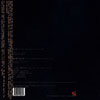 After a week of spending some time almost every day listening to thisdouble CD set that compiles three previous releases by Icarus, thereare some bits that I've grown to really like quite a lot, but there arealso some bits that I like less with every listen. For example, thethree tracks from the UL-6 EP (originallyreleased on Output Recordings in 2001) that take up a good chunk of thefirst disc are initially quite impressive in their complexity,featuring off-kilter combinations of scattershot breakbeats and soundsthat seem like the final creaks and clanks of dying machinery. Onrepeated listens, that complexity begins to take on an air of aimlessnoodling, especially on the track "UL-6" which could definitely bear abit of shaving down from its 10+ minutes. Disc one is saved, however,by the excellent pair of closing tracks (taken from last year's Soviet Igloo12") which tone down the hyperactive elements and bring in a melodicside that bears some resemblance to Telefon Tel Aviv. The entirety ofdisc two is taken up by the 2002 album Misfits (previouslyavailable on the Not Applicable label), and the six tracks manage tostrike a decent balance between the skittery-clattery bits and themellow-melodic bits. Aside from one lovely track that appears to becalled "Xot Zioks" (sorry, the track listing is really small and in afucked up font), none of it is quite as pleasing to my ears as thosetwo Soviet Igloo tracks from the first disc. I also can't helpbut wonder—considering that the eleven tracks on this release have atotal combined length of around 75 minutes—why did this have to be adouble disc?
After a week of spending some time almost every day listening to thisdouble CD set that compiles three previous releases by Icarus, thereare some bits that I've grown to really like quite a lot, but there arealso some bits that I like less with every listen. For example, thethree tracks from the UL-6 EP (originallyreleased on Output Recordings in 2001) that take up a good chunk of thefirst disc are initially quite impressive in their complexity,featuring off-kilter combinations of scattershot breakbeats and soundsthat seem like the final creaks and clanks of dying machinery. Onrepeated listens, that complexity begins to take on an air of aimlessnoodling, especially on the track "UL-6" which could definitely bear abit of shaving down from its 10+ minutes. Disc one is saved, however,by the excellent pair of closing tracks (taken from last year's Soviet Igloo12") which tone down the hyperactive elements and bring in a melodicside that bears some resemblance to Telefon Tel Aviv. The entirety ofdisc two is taken up by the 2002 album Misfits (previouslyavailable on the Not Applicable label), and the six tracks manage tostrike a decent balance between the skittery-clattery bits and themellow-melodic bits. Aside from one lovely track that appears to becalled "Xot Zioks" (sorry, the track listing is really small and in afucked up font), none of it is quite as pleasing to my ears as thosetwo Soviet Igloo tracks from the first disc. I also can't helpbut wonder—considering that the eleven tracks on this release have atotal combined length of around 75 minutes—why did this have to be adouble disc?samples:
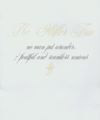 Nothing musical has ever made me dizzy like this before. I don't knowif I was just tired, if it was the music, or maybe a combination of thetwo but it's doing it again now. The walls were wavering and I felt asif I were suffocating, the light that should've been filtering throughthe curtains from outside were swallowed up by the sound. I'm feelingsick. My skin is crawling, I can't keep my eyes focused and my headsimply won't hold up any longer. My skin itches; there's somethingunder my skin and it fucking itches. I look at the clock and it's 3:30in the morning. Ten minutes later I look again and it's 4:30. I'mlosing my mind. I try to stand up but sitting back down seems like thebest idea. There's something crawling up the back of my neck and Ican't quite swat it away. There's lots of them, they're biting, and nowmy eyes are closing. I can't go to sleep but I want to, desperately. Myarms are getting heavy, it's harder to breathe, my shoulders and backare starting to throb and ache. I know there's light in this room but Ican't feel it or see it. I'm getting paranoid, I want to scream butwhen my mouth opens there's no sound. Then it's gone. I can breathe,the sun is rising up over the trees in my backyard and I suddenlyrealize that I'm sitting on the floor and not in a chair at all. I feelmore awake; every sound in the room is amplified a thousand times,however. The hum of my computer is more obvious, the wind outside isdisasterous, when I take a drink of water it is almost deafening. I didnot go to sleep easily last night, the incessant chirping of the birdskept me awake until fatigue pushed me under. Now I'm going back to itlike a little fiend. The lights are out and I'm breathing heavilyagain.
Nothing musical has ever made me dizzy like this before. I don't knowif I was just tired, if it was the music, or maybe a combination of thetwo but it's doing it again now. The walls were wavering and I felt asif I were suffocating, the light that should've been filtering throughthe curtains from outside were swallowed up by the sound. I'm feelingsick. My skin is crawling, I can't keep my eyes focused and my headsimply won't hold up any longer. My skin itches; there's somethingunder my skin and it fucking itches. I look at the clock and it's 3:30in the morning. Ten minutes later I look again and it's 4:30. I'mlosing my mind. I try to stand up but sitting back down seems like thebest idea. There's something crawling up the back of my neck and Ican't quite swat it away. There's lots of them, they're biting, and nowmy eyes are closing. I can't go to sleep but I want to, desperately. Myarms are getting heavy, it's harder to breathe, my shoulders and backare starting to throb and ache. I know there's light in this room but Ican't feel it or see it. I'm getting paranoid, I want to scream butwhen my mouth opens there's no sound. Then it's gone. I can breathe,the sun is rising up over the trees in my backyard and I suddenlyrealize that I'm sitting on the floor and not in a chair at all. I feelmore awake; every sound in the room is amplified a thousand times,however. The hum of my computer is more obvious, the wind outside isdisasterous, when I take a drink of water it is almost deafening. I didnot go to sleep easily last night, the incessant chirping of the birdskept me awake until fatigue pushed me under. Now I'm going back to itlike a little fiend. The lights are out and I'm breathing heavilyagain. 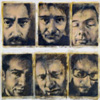 Tindersticks' first two albums, which appeared in the early 1990s, weremarked by an uncommon emotional rawness and seductive melancholy.Tracks like "A Night In" and "Tiny Tears" with their epicorchestrations and Stuart Staples' brooding croon rank alongside someof the better works of Nick Cave and Scott Walker. The albumssubsequent to their first two eponymous records, like Curtains and Can Our Love,contain occassional moments of that intial brilliance, but overall, theheart-wrenching, visceral gutsiness that once dominated their workbegan to fade. On Waiting for the Moon, their sixth album, itis all but gone. Tindersticks have seemed to lapse into the sameself-satisfied, vanilla territory of chamber pop as radio-friendlybands like Cousteau. The twangy guitar and insipid lyrics on thealbum's opening track, "Until the Morning Comes" set the uninpsiredtone. Even Stuart's voice sounds like a washed-out shadow of what itonce was. "Say Goodbye To the City," despite its crescendo towards theend, ultimately goes nowhere. Tindersticks have reached the point atwhich they've begun to sound as if they've run out of ideas. Despitethe fact that they thump out albums at a regular pace, it seems as ifthey would serve themselves better by taking time to re-evaluate theirdirection (or lack thereof). I was shocked to read that the pressrelease for Waiting for the Moon touted: "more sonicexplorations in sound" and a return to their "experimental" roots,because those statements couldn't be further from the truth.
Tindersticks' first two albums, which appeared in the early 1990s, weremarked by an uncommon emotional rawness and seductive melancholy.Tracks like "A Night In" and "Tiny Tears" with their epicorchestrations and Stuart Staples' brooding croon rank alongside someof the better works of Nick Cave and Scott Walker. The albumssubsequent to their first two eponymous records, like Curtains and Can Our Love,contain occassional moments of that intial brilliance, but overall, theheart-wrenching, visceral gutsiness that once dominated their workbegan to fade. On Waiting for the Moon, their sixth album, itis all but gone. Tindersticks have seemed to lapse into the sameself-satisfied, vanilla territory of chamber pop as radio-friendlybands like Cousteau. The twangy guitar and insipid lyrics on thealbum's opening track, "Until the Morning Comes" set the uninpsiredtone. Even Stuart's voice sounds like a washed-out shadow of what itonce was. "Say Goodbye To the City," despite its crescendo towards theend, ultimately goes nowhere. Tindersticks have reached the point atwhich they've begun to sound as if they've run out of ideas. Despitethe fact that they thump out albums at a regular pace, it seems as ifthey would serve themselves better by taking time to re-evaluate theirdirection (or lack thereof). I was shocked to read that the pressrelease for Waiting for the Moon touted: "more sonicexplorations in sound" and a return to their "experimental" roots,because those statements couldn't be further from the truth. 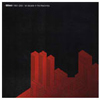 For those who are unfamiliar with the Norwegian trio Ulver, here's abit of background for you: They got their start as part of the infamousScandinavian black metal scene, and in the mid-90s released a trilogyof albums based on the darker aspects of Norwegian folklore that areconsidered classics in the genre. They then alienated much of theiroriginal fanbase with a sprawling double CD that placed readings fromWilliam Blake's The Marriage of Heaven and Hell over a variety ofsounds that included dark ambience, jazz and industrial noise.Interviews with the group revealed their strong interest inexperimental and esoteric artists, especially Coil, and subsequentreleases have continued to flit from one style to another, with theonly continuing theme being their movement to embrace electronic toolsas their primary sound source. This interest in technology comes to ahead on their latest project, the retrospective-cum-remix album1993-2003: 1st Decade in the Machines, on which 13 electronic andexperimental artists - including Third Eye Foundation, BogdanRaczynski, Fennesz, Pita, V/Vm and Merzbow - plus Ulver themselves havepulled material from the group's decade of work and in most casesmulched the material into something completely new. Ulver themselvesget things started in fine fashion with "Crack Bug", an excellent piecethat packs heavy doses of sinister atmospheres and boiling chaos into anice and compact three and a half minutes. Too bad Alexander Rishaugdidn't follow a similar "quality over quantity" rule for hiscontribution which follows, as his mixture of skittering glitches andfiltered guitars is already tired by the halfway point of its seeminglyendless eight minutes. Thankfully, the overall quality of the disctends towards to positive side of things, with highlights like"Lyckantropen Remix" from Third Eye Foundation which is a beautiful andsubdued work that combines a clicky backdrop with a quiet and moodymelody, and the orchestral and organic ambience of the epic "I LoveYou, But I Prefer Trondheim (parts 1-4)" by Adam Wiltzie (of Stars ofthe Lid) Vs. Stars Of The Lid. The album's main problem is one ofconsistency and flow, as many of the tracks sound drastically out ofplace next to one another. The cute video game melodies and punchybreakbeats of Bogdan Raczynski's "Bog's Basil & Curry PowderPotatos Recipe" sound especially lost amongst this collection ofgenerally darker and less perky numbers. It's not until thedisc-closing triptych of noise from Jazzkammer, V/Vm and Merzbow that aconsistent vibe is felt, and by that point, it's a bit too late (not tomention annoying for those who don't dig the noise thing). So on atrack-by-track basis, this one gets some high marks, but as a completealbum, it just doesn't work for me.
For those who are unfamiliar with the Norwegian trio Ulver, here's abit of background for you: They got their start as part of the infamousScandinavian black metal scene, and in the mid-90s released a trilogyof albums based on the darker aspects of Norwegian folklore that areconsidered classics in the genre. They then alienated much of theiroriginal fanbase with a sprawling double CD that placed readings fromWilliam Blake's The Marriage of Heaven and Hell over a variety ofsounds that included dark ambience, jazz and industrial noise.Interviews with the group revealed their strong interest inexperimental and esoteric artists, especially Coil, and subsequentreleases have continued to flit from one style to another, with theonly continuing theme being their movement to embrace electronic toolsas their primary sound source. This interest in technology comes to ahead on their latest project, the retrospective-cum-remix album1993-2003: 1st Decade in the Machines, on which 13 electronic andexperimental artists - including Third Eye Foundation, BogdanRaczynski, Fennesz, Pita, V/Vm and Merzbow - plus Ulver themselves havepulled material from the group's decade of work and in most casesmulched the material into something completely new. Ulver themselvesget things started in fine fashion with "Crack Bug", an excellent piecethat packs heavy doses of sinister atmospheres and boiling chaos into anice and compact three and a half minutes. Too bad Alexander Rishaugdidn't follow a similar "quality over quantity" rule for hiscontribution which follows, as his mixture of skittering glitches andfiltered guitars is already tired by the halfway point of its seeminglyendless eight minutes. Thankfully, the overall quality of the disctends towards to positive side of things, with highlights like"Lyckantropen Remix" from Third Eye Foundation which is a beautiful andsubdued work that combines a clicky backdrop with a quiet and moodymelody, and the orchestral and organic ambience of the epic "I LoveYou, But I Prefer Trondheim (parts 1-4)" by Adam Wiltzie (of Stars ofthe Lid) Vs. Stars Of The Lid. The album's main problem is one ofconsistency and flow, as many of the tracks sound drastically out ofplace next to one another. The cute video game melodies and punchybreakbeats of Bogdan Raczynski's "Bog's Basil & Curry PowderPotatos Recipe" sound especially lost amongst this collection ofgenerally darker and less perky numbers. It's not until thedisc-closing triptych of noise from Jazzkammer, V/Vm and Merzbow that aconsistent vibe is felt, and by that point, it's a bit too late (not tomention annoying for those who don't dig the noise thing). So on atrack-by-track basis, this one gets some high marks, but as a completealbum, it just doesn't work for me. - Third Eye Foundation - Lyckantropen Remix
- Bogdan Raczynski - Bog's Basil & Curry Powder Potatos Recipe
- V/Vm - The Descent of Men
 After almost becoming another defeat at the hands of the major labels,finally the Jealous Sound release their debut full-length with theirold friends at Better Looking Records. Trust me: if the prevailingrumor about Jive having hold over them is true, it's justificationenough for the increase in darkness and aggression in their overallsound. That's just one area of growth and change brought forth on thisrelease, though, as the band finally delivers on the lofty expectationsbeing thrown about. It seems, actually, that now that Blair Shehan hasa proper band for the project he's settling in just fine to apost-Knapsack indie pop sound. Relentless touring and all that time inrecording limbo gave them the opportunity to create a cohesive and boldgroup of songs. Working with Tim O'Heir, they even found theopportunity to expand their sound, adding touches of keyboards here andthere, as well as some spirited backing vocals that it would be easy tomiss with their live power and Shehan's signature voice. Only onepreviously released song, "Anxious Arms," finds its way on to thealbum, and I honestly prefer the version from their self-titled EP. Allover this release they show the ferocity and keen grasp of melodyaudiences have seen for three years. "Hope For Us" is a call out to thedesperate attention leeches, with a hearty "Kiss me open mouth!" andloud swirled guitars on the chorus. "Naive" and "Does That Make Sense"are three-minute power pop gems, the kind where everyone jumps up anddown at the shows. Slower tempo tracks are sprinkled throughout, withthe six-minute "Recovery Room" showing the most promise, though thedouble-shot of "Guard It Closely" and "For Once in Your Life" with itskeyboard handclaps hold up the middle of the record quite well. One ofthe finest moments, though, is the keyboard drive of "The Fold Out"with its haunting "oohs" and freight train final minute. There's windin their sails, they've lasted this far, and now they're ready to takeover the world. And I'm ready and willing to let them.
After almost becoming another defeat at the hands of the major labels,finally the Jealous Sound release their debut full-length with theirold friends at Better Looking Records. Trust me: if the prevailingrumor about Jive having hold over them is true, it's justificationenough for the increase in darkness and aggression in their overallsound. That's just one area of growth and change brought forth on thisrelease, though, as the band finally delivers on the lofty expectationsbeing thrown about. It seems, actually, that now that Blair Shehan hasa proper band for the project he's settling in just fine to apost-Knapsack indie pop sound. Relentless touring and all that time inrecording limbo gave them the opportunity to create a cohesive and boldgroup of songs. Working with Tim O'Heir, they even found theopportunity to expand their sound, adding touches of keyboards here andthere, as well as some spirited backing vocals that it would be easy tomiss with their live power and Shehan's signature voice. Only onepreviously released song, "Anxious Arms," finds its way on to thealbum, and I honestly prefer the version from their self-titled EP. Allover this release they show the ferocity and keen grasp of melodyaudiences have seen for three years. "Hope For Us" is a call out to thedesperate attention leeches, with a hearty "Kiss me open mouth!" andloud swirled guitars on the chorus. "Naive" and "Does That Make Sense"are three-minute power pop gems, the kind where everyone jumps up anddown at the shows. Slower tempo tracks are sprinkled throughout, withthe six-minute "Recovery Room" showing the most promise, though thedouble-shot of "Guard It Closely" and "For Once in Your Life" with itskeyboard handclaps hold up the middle of the record quite well. One ofthe finest moments, though, is the keyboard drive of "The Fold Out"with its haunting "oohs" and freight train final minute. There's windin their sails, they've lasted this far, and now they're ready to takeover the world. And I'm ready and willing to let them.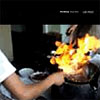 Some might call Niblock single minded, in that he always approachescomposition in pretty much the same way. Take a living drone thendouble it, treble it, increase overlayed density until new harmonicovertones appear. What is nice is that he seems to be able to up theante with each release. This is his most mind-altering selection ofdroners yet, and its actually pretty difficult to listen to the wholething without zoning out into the void completely. Over two CDs thereare four different instrumental approaches foregrounded, and it's thedifferent textures of each instrument that characterize each ofNiblock's compositions. Even so, he seems to have more light and shadeand ebb and flow here than in some of his earlier more static tracks.Perhaps the stand out track is "Yam Almost May" with bowed and e-bowedbass drones played by Kaspar T. Toeplitz, sampled and superimposed byNiblock. This builds up ever expanding and enlarging swathes ofharmonic density, sounding more like a deep wind instrument than a bassguitar. The first disc also features heavy baritone sax C tone droneson "Sea Jelly Yellow" and similarly opaque clarinet, bass clarinet andbasset horn lockdown. The second disc is a four-part skullfuck thattakes the dear old piano to corners it rarely visits courtesy of anylon string tied to a single piano string and is seventy minutes longmostly because Niblock is seventy this year. The sound it makes is morelike Glenn Branca's symphonic guitar army than a regular piano, and Ikeep expecting those massive drums to come rolling over the horizon. Ofcourse the drums never come, leaving the massed ecstatic bass tones toboom on in eternal foreplay. The booklet includes photos of Asiansgrowing and making food and some thoughts on Niblock's drones fromGerard Pape, who makes a case for shape shifting 'timbre as space insuspended time.' Featured saxophonist Ulrich Krieger also comments onsome differing technicalities of pieces he's performed in collaborationwith Niblock, and guitar droner Rafael Toral raises some interestingideas about the emotional impact of various Niblock tracks. I findNiblock's music really useful for blocking out everything when I wantto rest and there's a lot of noise going on. It also seems to annoy thehell out of trendy fuckwits, 'that's-not-music' ignoramuses andattention seekers with low attention spans. The blocks seep by soslowly that change is almost imperceptible until some new overtonebrings on a seismic shift. His images of people working might be apt inrespect of monotony, but on another level, if you were to actually chopwood and lug boxes into boats with Niblock on full blast you'd probablyzonk out and fall in the river or accidentally cut off your poor littlehand. Lord let Phill fuck your mind completely!
Some might call Niblock single minded, in that he always approachescomposition in pretty much the same way. Take a living drone thendouble it, treble it, increase overlayed density until new harmonicovertones appear. What is nice is that he seems to be able to up theante with each release. This is his most mind-altering selection ofdroners yet, and its actually pretty difficult to listen to the wholething without zoning out into the void completely. Over two CDs thereare four different instrumental approaches foregrounded, and it's thedifferent textures of each instrument that characterize each ofNiblock's compositions. Even so, he seems to have more light and shadeand ebb and flow here than in some of his earlier more static tracks.Perhaps the stand out track is "Yam Almost May" with bowed and e-bowedbass drones played by Kaspar T. Toeplitz, sampled and superimposed byNiblock. This builds up ever expanding and enlarging swathes ofharmonic density, sounding more like a deep wind instrument than a bassguitar. The first disc also features heavy baritone sax C tone droneson "Sea Jelly Yellow" and similarly opaque clarinet, bass clarinet andbasset horn lockdown. The second disc is a four-part skullfuck thattakes the dear old piano to corners it rarely visits courtesy of anylon string tied to a single piano string and is seventy minutes longmostly because Niblock is seventy this year. The sound it makes is morelike Glenn Branca's symphonic guitar army than a regular piano, and Ikeep expecting those massive drums to come rolling over the horizon. Ofcourse the drums never come, leaving the massed ecstatic bass tones toboom on in eternal foreplay. The booklet includes photos of Asiansgrowing and making food and some thoughts on Niblock's drones fromGerard Pape, who makes a case for shape shifting 'timbre as space insuspended time.' Featured saxophonist Ulrich Krieger also comments onsome differing technicalities of pieces he's performed in collaborationwith Niblock, and guitar droner Rafael Toral raises some interestingideas about the emotional impact of various Niblock tracks. I findNiblock's music really useful for blocking out everything when I wantto rest and there's a lot of noise going on. It also seems to annoy thehell out of trendy fuckwits, 'that's-not-music' ignoramuses andattention seekers with low attention spans. The blocks seep by soslowly that change is almost imperceptible until some new overtonebrings on a seismic shift. His images of people working might be apt inrespect of monotony, but on another level, if you were to actually chopwood and lug boxes into boats with Niblock on full blast you'd probablyzonk out and fall in the river or accidentally cut off your poor littlehand. Lord let Phill fuck your mind completely! Arguably nobody has done more for Icelandic music than the Smekkleysa(a.k.a. Bad Taste) label. This double-CD compilation markes the label's100th release after 16 years of operating. Disc one features rare andexclusive music from some of the biggest names and current bands wothchecking out, including the proverbial Bjork and Sigur Ros cuts, alongwith retro freaks Trabant, that other guy from the Sugarcubes, Einar?rn, as well as glitchsters Stilluppsteypa, distorted rockers Minus,and Gunnar (Dr. Gunni) Hj?lmarsson (the label's most visible employeeand cool radio show host), himself. Disc two is a bit of a 'greatesthits' over the years, highlighting the most different stylesimaginable, with a punchy tune from Hei?a's old outfit, Unun; aFrenchy-style accordion and crooner bit from Hlj?msveit Konr??s B?;f-word heavy hip hop from Faculty; goth-metal sounds from Olympia(please don't sing in English); porn-funk from Funkstra?e; plenty ofhardcore and pop; and the single that kicked the label off, "Amm?li,"(Birthday) from Sykurmolarnir (known outside of Iceland as Sugarcubes).Both discs styles flip-flop completely, and I have to admit that Ican't think of one person who could actually like every song here, butit's not terribly unwelcome, as the songs are short, end, and a newsong begins. It's much like listening to a mix tape and not knowingwhat the tracklisting is because there's always that burning curiosityas to "what's next?" A lot of this music is completely unheard ofoutside of the tiny island, despite the number of bands that have infact made their way across the waters in the last few years, sohopefully some of these bands' completists might actually take sometime to listen to what -else- there is out there before letting somehip fashion magazine dictate it.
Arguably nobody has done more for Icelandic music than the Smekkleysa(a.k.a. Bad Taste) label. This double-CD compilation markes the label's100th release after 16 years of operating. Disc one features rare andexclusive music from some of the biggest names and current bands wothchecking out, including the proverbial Bjork and Sigur Ros cuts, alongwith retro freaks Trabant, that other guy from the Sugarcubes, Einar?rn, as well as glitchsters Stilluppsteypa, distorted rockers Minus,and Gunnar (Dr. Gunni) Hj?lmarsson (the label's most visible employeeand cool radio show host), himself. Disc two is a bit of a 'greatesthits' over the years, highlighting the most different stylesimaginable, with a punchy tune from Hei?a's old outfit, Unun; aFrenchy-style accordion and crooner bit from Hlj?msveit Konr??s B?;f-word heavy hip hop from Faculty; goth-metal sounds from Olympia(please don't sing in English); porn-funk from Funkstra?e; plenty ofhardcore and pop; and the single that kicked the label off, "Amm?li,"(Birthday) from Sykurmolarnir (known outside of Iceland as Sugarcubes).Both discs styles flip-flop completely, and I have to admit that Ican't think of one person who could actually like every song here, butit's not terribly unwelcome, as the songs are short, end, and a newsong begins. It's much like listening to a mix tape and not knowingwhat the tracklisting is because there's always that burning curiosityas to "what's next?" A lot of this music is completely unheard ofoutside of the tiny island, despite the number of bands that have infact made their way across the waters in the last few years, sohopefully some of these bands' completists might actually take sometime to listen to what -else- there is out there before letting somehip fashion magazine dictate it.- Bubbleflies - Strawberries
- Funkstra?e - Professorinn R??leggur
- Maus - Glerhjarta
- R?nk - Innip?kinn




